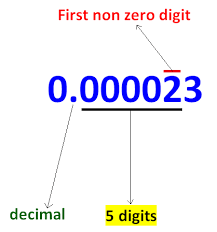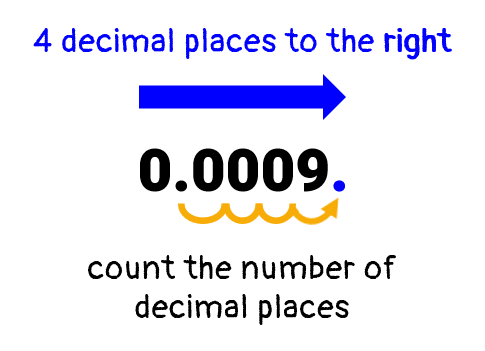To calculate result you have to disable your ad blocker first.
Standard Form Calculator
Enter the number in the input box to get the standard form/Scientific e-notation/Engineering notation using our standard notation calculator (converter).
Table of Contents:
Standard Notation Calculator
Standard form calculator is an online tool that converts any positive or negative number from a number format to decimal with a multiple of powers of 10. This standard notation calculator instantly shows the converted standard form of the given number with detailed steps.
Our standard notation converter also provides scientific notation, e-notation, and engineering notation by converting a long number into an easily readable form. You can also use our scientific notation calculator and scientific notation converter to calculate scientific notations.
What is standard form?
If you are wondering what is standard form in math, then you are at the right place. In mathematics, standard form is a specific way of writing numbers, equations, or expressions in a standardized form by following some specific rules.
Here we explain a standard form of numbers, which means writing long numbers in scientific notation form with multiples of 10. Standard form reduces the difficulty of reading very large or very small numbers.
In simple words, the standard form of a number is any number between 1.0 and 10.0 multiplied by power 10. i.e., 1.2× 102. For a demonstration of standard form, see the below examples:
Number: 85500000000000
Standard form: 8.55 × 1013
Number: 0.000458912
Standard form: 4.58 × 10-4
How to write a Number in Standard Form?
To quickly write numbers in standard form, you can use our standard form calculator which calculates the standard form of any number. However, we will explain how to convert a number to a standard form manually.
For this follow the below steps that help to convert a number into standard form:
- Write down the number.
- Identify the decimal point in the number. If there is no decimal point in the given number, it is considered at the right side of the number after the last digit.
- After identifying the decimal point, move the decimal to the first non-zero digit in the number.

- Count the total number of digits you have moved to the decimal point. Multiply the number by 10 and raise the power of 10 with the total number of digits the decimal has moved. If the decimal is moved from right to left, power will be positive, and if the decimal is moved from left to right, power will be negative.
Standard Form Example:
Convert 0.0009 to the standard form.
Solution:
Follow the steps to find the standard form of the given number.
Step 1: Write down the number.
0.0009
Step 2: Identify the decimal point in the number.
You can see the decimal point is lying after 4 digits from the left side.
Step 3: After identifying the decimal point, move the decimal to the first non-zero digit in the number.
It will become 9. Because there is no non-zero digit after 9, we don’t need to write the decimal point after 9.

Step 4: Count the total number of digits you have moved to the decimal point.
We have moved the decimal 4 places further. Multiply the number by 10 and raise the power of 10 with the total number of digits the decimal has moved. As we have moved the decimal point from left to right, the power will be negative.
9 × 10-4
So, the standard form of the number 0.0009 is 9 × 10-4. To verify this manual result, use the above standard form calculator.
Examples:
| 25*10^6 in standard form | 2.5 x 107 |
| 5004300 in standard form | 5.0043 x 106 |
| 0.00147 in standard form | 1.47 x 10-3 |
| 0.884 in standard form | 8.84 x 10-1 |
| 234.543 x 10^2 in standard form | 2.34543 x 104 |
Faq’s
How to convert numbers into standard form?
Note the formula of standard form “b × 10ⁿ” and follow the standard form rules to shift the decimal point after the 1st non-zero digits & count the moved number. Then place the value at the exponent of 10. For quick conversion use our above standard form converter.
What is the standard form of a Million, Billion, & Trillion?
The “1-million” is equal to “1,000,000”, by using the standard form rules its standard notation is written as “1 x 106”. However, “1-billion=1,000,000,000” and “1-trillion=1,000,000,000,000”, their standard forms are “1×109” and “1×1012”, respectively. To verify these notations, use our standard form calculator.
Why do we use the standard form?
Standard form is used to handle large numbers to perform mathematical solutions in physics, mathematics, and many others. It helps to write large or small numbers in a precise & understandable way.
What is a Standard Fraction?
To write the fraction or decimal in rational form (p/q) is known as the standard form of a fraction or standard fraction. For this, make the numerator & denominator co-prime with each other or the common factor is “1”. i.e., 5/6, 11/12.
How to calculate standard form of 0.000380 & 459,608?
To calculate standard form, identify the first non-zero digit, shift the decimal point, and count the moved places. Finally, write the result in the form of a×10b. The standard form of 0.000380 is equal to “3.8 ×10-4” and “459,608 = 4.59×105”.
References:
- Mathsisfun.com. Standard Form.
- Splashlearn.com. What Is Standard Form? - Definition, Facts & Example.
- Amathsdictionaryforkids.com. Standard Form ~ Reference By Jenny Eather.